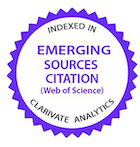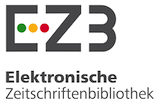Follicular dynamics in dairy sheep within and out of the breeding season employing high or low progesterone concentration in estrous cycle synchronization
DOI:
https://doi.org/10.1590/1809-6891v25e-77084EAbstract
Follicular dynamics in dairy sheep is poorly understood. This study assessed the
follicular dynamics of dairy sheep within and out of the breeding season by observing the
effect of two progesterone concentrations (60 and 120 mg) used in vaginal pessaries in
pre-synchronization. The experiment was conducted in April/May and October/November
using 40 healthy multiparous dairy ewes predominantly of the Lacaune breed, which
underwent daily transrectal ultrasound examinations. The number of ovulations (1.35 vs
1.05), ovulatory follicle diameter (mm) (5.97 vs 5.05), length of the luteal phase (11 vs 9.14
days), and length of the estrous cycle (16.83 vs 16.6 days) were assessed within and out of
the breeding season, respectively. The sheep out of the breeding season did not present a
corpus luteum at the time of insertion of the vaginal pessary, characterizing anestrus. The
ovulatory follicle had a larger diameter in the breeding season even with the shorter length
of the follicular phase, suggesting higher viability and quality of the ovulated oocyte. The
application of exogenous progesterone extends the luteal phase in the breeding season
(11 vs 9.14 days). The anestrus observed out of season suggests the need for a higher
progesterone concentration in reproductive protocols. Therefore, breeding protocols can
be adapted for different seasons, suggesting the use of vaginal pessaries with a higher
progesterone concentration (120 mg) out of the breeding season. The data allowed the
characterization of follicular dynamics in dairy sheep, demonstrating their differences in
each season based on the use of different progesterone doses in pre-synchronization.
Downloads
References
Adams GP. Comparative patterns of follicle development and selection in ruminants. Journal Reprod Fertil Suppl. 1999; 54: 17-32. DOI: https://doi.org/10.1111/rda.14064.
Baby TE, Bartlewski PM. Progesterone as the driving regulatory force behind serum FSH concentrations and antral follicular development in cycling ewes. Reproduction, Fertility and Development. 2011; 23: 303– 310. DOI: https://doi.org/10.1071/RD10121.
Baird DT. Factors regulating the growth of the preovulatory follicle in sheep and human. Journal Reprod Fertil. 1983; 69: 343-352. DOI: https://doi.org/10.1530/jrf.0.0690343.
Bartlewski PM, Aravindakshan J, Beard AP, Nelson ML, Batiasta-Arteaga S, Cook J. Effects of medroxyproges testoterone acetate (MAP) on ovarian antral follicle development, gonadotrophin secretion and response to ovulation induction with gonadotrophin-releasing hormone (GnRH) in seasonally anoestrous ewes. Animal Reproduction Science. 2004. ; 81: 63–75.
DOI: https://doi.org/10.1016/j.anireprosci.2003.10.002 .
Bartlewski PM, Sohal J, Paravinja V, Bebé T, Oliveira MEF, Murawski M, Schwarz T, Zieba DA, Keisler DH. Is progesterone the key regulatory factor behind ovulation rate in sheep. Domestic Animal Endocrinology. 2017; 58: 30-38.
DOI: https://doi.org/10.1016/j.domaniend.2016.06.006.
Brogni CF, Souza, AFDE. Ultrasonography in Ovine Follicular Dynamics. Open Journal of Agricultural Research. 2021; 1(1): 25–29.
DOI: https://www.scipublications.com/journal/index.php/ojar/article/view/82.
Campbell BK, Scaramuzzi RJ, Webb R. Control of follicle development and selection in sheep and cattle. Journal of reproduction and fertility-Supplement. 1995; 49: 335-350. DOI: 10.1530/biosciprocs.3.026.
Evans AC. Ovarian follicle growth and consequences for fertility in sheep. Animal Reproduction Science. 2003; 78: 289-306.
DOI: https://doi.org/10.1016/S0378-4320(03)00096-4.
Gonzalez-Bulnes A, Santiago-Moreno J, Garcia-Garcia RM, Del-Campo A, Gomez-Brunet A, Lopez-Sebastian A. Origin of the preovulatory follicle in Mouflon sheep (Ovis gmelini musimon) and effect on the growth of remaining follicles during the follicular phase of oestrous cycle. Animal Reproduction Science. 2001; 65: 265-272. DOI: https://doi.org/10.1016/S0378-4320(01)00076-8.
Gonzalez-Bulnes A, Veiga-Lopez A. Ovarian follicular dynamics and dominance effect in sheep. Societa Italiana di fisiologia Veterinaria. VI congresso Nazionale Stointino. 2005; 2–4.
DOI: https://www.sofivet.it/pubblicazioni/cd/SOFIVET/pdf/09.pdf.
Goodman RL. Neuroendocrine control of the ovine estrous cycle. In: Knobil E and Neill JD (eds.), The Physiology of Reproduction. New York: Raven Press; 1994; 660–693.
Hutchinson JSM, Robertson HA. The growth of the follicle and corpus luteum in the ovary of the sheep. Research in Veterinary Science. 1966; 7: 17-24.
DOI: https://doi.org/10.1016/S0034-5288(18)34705-2.
Lamberson WR, Thomas DL. Effects of season and bread of sire on incidence of estrus and ovulation rate in sheep. Journal of animal science. 1982; 54(3): 533-539.
DOI: https://doi.org/10.2527/jas1982.543533x.
Lopez-Sebastian A, Gonzalez-Bulnes A, Santiago-Moreno J, Gomez-Brune A, Townsend EC, Inskeep EK. Effects of follicular status at treatment on follicular development and ovulation in response to FSH in Spanish Merino ewes. Theriogenology. 1999; 52: 505-514.
DOI: https://doi.org/10.1016/S0093-691X(99)00147-8.
Menchaca A, Vilarino M, Crispo M, De Castro T, Rubianes E. New approaches to superovulation and embryo transfer in small ruminants. Reproduction, fertility, and development. 2010; 22(1): 113-118. DOI: https://doi.org/10.1071/rd09222.
Miura R. Physiological characteristics and effects on fertility of the first follicular wave dominant follicle in cattle. Journal of Reproduction and Development. 2019; 65(4): 289‐295. DOI: https://doi.org/10.1262/jrd.2019-027.
Noël B, Bister JL, Paquay R. Ovarian follicular dynamics in Suffolk ewes at different periods of the year. Journal of reproduction and fertility. 1993; 99(2): 695-700.
DOI: https://doi.org/10.1530/jrf.0.0990695.
Oliveira MEF. State-of-the-art in the superovulation of ewes. Acta Scientiae Veterinariae. 2011; 39: 65-70.
DOI: https://www.redalyc.org/articulo.oa?id=289060016005.
Rubianes E, Menchaca A, Carbajal B. Response of the 1-5 day-aged ovine corpus luteum to prostaglandin F2alpha. Animal Reproduction Science. 2003a; 78: 47-55.
DOI: https://doi.org/10.1016/S0378-4320(03)00046-0.
Rubianes E, De Castro T, Carvajal B. Effect of high progesterone levels during the growing phase of the dominant follicle of wave 1 in ultrasonographically monitored ewes. Canadian Journal of Animal Science. 1996; 76: 473-475.
DOI: https://doi.org/10.4141/cjas96-071.
Russel A.J.F, Doney J.M, Gunn R.G. Subjective assessment of body fat in live sheep. Journal Agricultural Science. 1969; 72: 451-454. DOI: https://doi.org/10.1017/S0021859600024874.
Seekallu SV, Toosi BM, Duggavathi R, Barrett DMW, Davies KL, Waldner C, Rawlings NC. Ovarian antral follicular dynamics in sheep revisited: comparison among estrous cycles with three or four follicular waves. Theriogenology. 2010; 73: 670–680. DOI: https://doi.org/10.1016/j.theriogenology.2009.11.007.
Souza CJH., Campbell BK, Baird DT. Follicular dynamics and ovarian steroid secretion in sheep during anoestrus. Journal of reproduction and fertility. 1996; 108: 101-106. DOI: https://doi.org/10.1530/jrf.0.1080101.
Talafha AQ, Ababneh MM. Awassi sheep reproduction and milk production: Review. Tropical Animal Health and Production. 2011; 43: 1319–1326.
Published
How to Cite
Issue
Section
License
Copyright (c) 2024 Brazilian Animal Science/ Ciência Animal Brasileira

This work is licensed under a Creative Commons Attribution 4.0 International License.
Authors who publish with this journal agree to the following terms:
- Authors retain copyright and grant the journal right of first publication with the work simultaneously licensed under a Creative Commons Attribution License that allows others to share the work with an acknowledgement of the work's authorship and initial publication in this journal.
- Authors are able to enter into separate, additional contractual arrangements for the non-exclusive distribution of the journal's published version of the work (e.g., post it to an institutional repository or publish it in a book), with an acknowledgement of its initial publication in this journal.
- Authors are permitted and encouraged to post their work online (e.g. in institutional repositories or on their website) prior to and during the submission process, as it can lead to productive exchanges, as well as earlier and greater citation of published work (See The Effect of Open Access).































